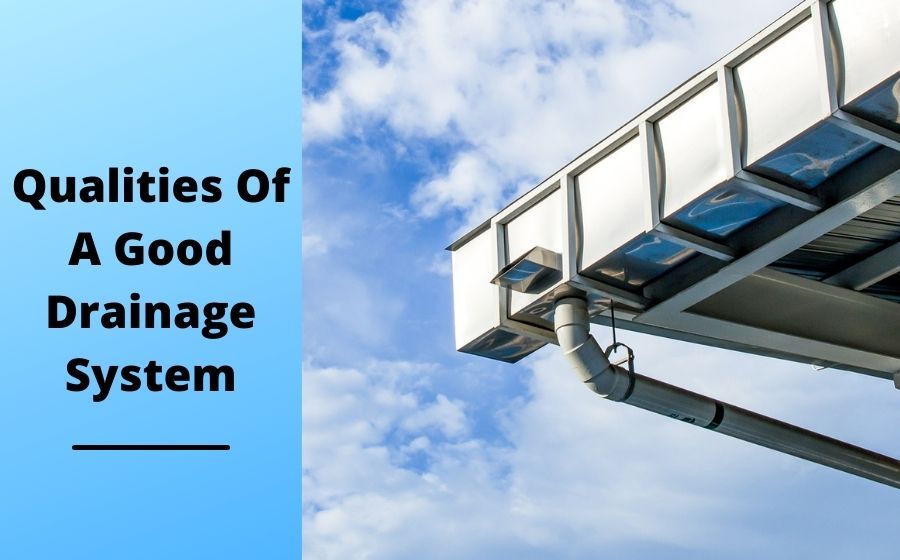
Overflowing gutters, clogged drains and sluggish flow of water through the pipes, downpipe issues, and wet spots on the lawn are the major issues faced by a property owner if the drainage system is not properly installed. Have you ever experienced a backflow of water through your kitchen sink? Or blocked toilet drains? All these things lead to the quality of the drainage system that is installed at your place. A drainage system for the residential area is designed while planning the architecture and building of the house. It is one of the main things that need to be done correctly to avoid drain issues in the future. Poor drainage systems can damage the foundation of the house or lead to soil erosion in the place. You wouldn’t want to face these problems, right? Thus, here are the main qualities that a good drainage system must have.
A drainage system consists of pipeline equipment, sewage reservoirs, and a major sewage area where all the excessive wastewater is drained. The system is required to collect and transport sewage water from the kitchen, toilet, and bath area. The roof of the house must have enough headroom to handle the surplus rainwater. Also, the outdoor gutter systems installed at the house must be properly sized to carry away all the wastewater.
1. Design a gravity pipe system
This goes without saying that a good and reliable drainage system is always designed keeping gravity in mind. The majority of the systems work best with downwards gravity force as no pressure differences or suction force is built while designing a drainage plant. If for some reason, a gravity pipe system can’t be installed, it’s better to install force main sewerage which works under pressure and build a force for the water flow.
2. Pipeline equipment qualities
A domestic drainage pipe system with high capacity is most reliable and is easy to clean (if required). The material used for the pipes must be durable and resistant to high and low temperatures. The pipes must be robust and mechanically and chemically wear-resistant. A pipe system with these qualities offers the best outcome and proves to be long-lasting. Another reliable quality of the drainage pipes is that they withstand a test pressure that is 1.5 times the working pressure but not less than 7 bars. The permanent pressure must correspond to the operating pressure and not be less than 4.5 bars.
3. Pipe sizing
As far as the most appropriate pipe sizes are concerned, the minimum diameter for a drain pipe is 100mm. If the pipe carries the discharge from only wastewater fixtures, the diameter can go down to 80 mm as well.
4. Durability
The material that is used to make the drains likely must be durable enough to withstand harsh conditions and elements. Also, if it has a long life span, it is a win-win for everyone. The standard galvanized steel and copper materials are ideal for building durable drains.
5. Ventilation of drains
Experiencing foul air from drains can disturb the overall kitchen and bathroom environment making the place unbearable to breathe in. Thus, it is important to have a good ventilation system of the drains to restrict the buildup of foul smells. A quality system consists of a minimum of 80mm diameter vent pipes that terminate in the open air. These are ideally located downstream of the discharge pipe, the one closest to the head of the drain. This allows regular flushing at the vent and drains meeting point ensuring good maintenance of the vent.
6. Proper inspection and maintenance
If you are looking for an ideal drain t install at your place, select the one which has good maintenance options. Inspection chambers must be installed in the drain system for routine checkups and inspection of the drain to avoid issues like leakage and blocking.
The above-mentioned in the post are the major qualities of a drainage system that would give long-lasting results, proves to be cost-effective, and are properly installed giving the best solution to the drainage of wastewater.